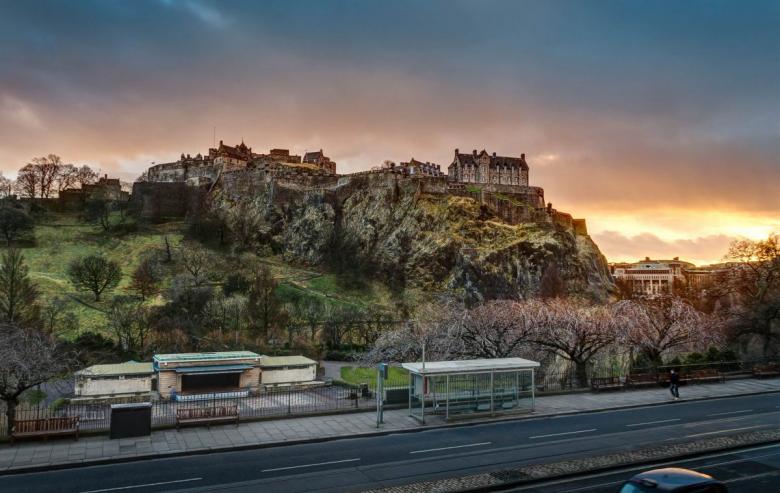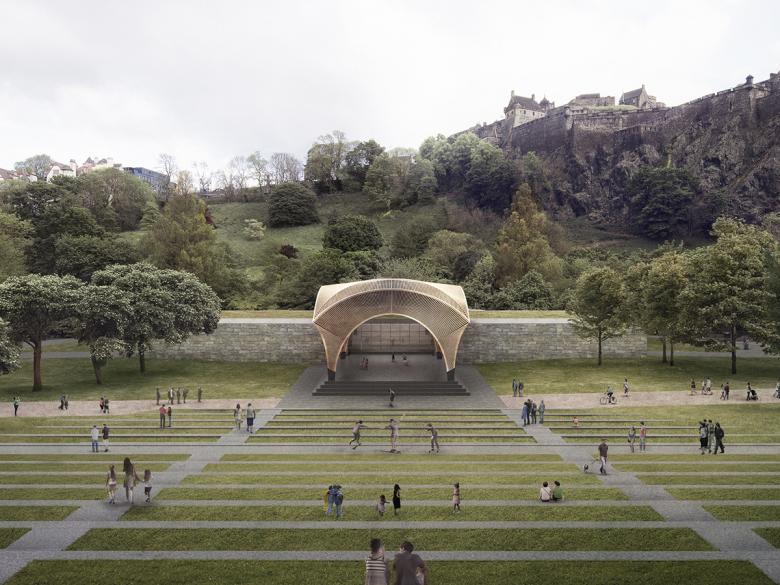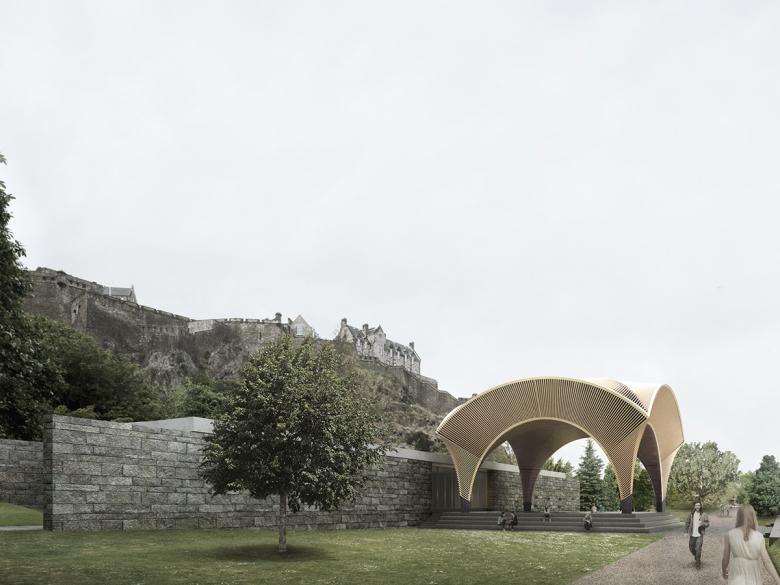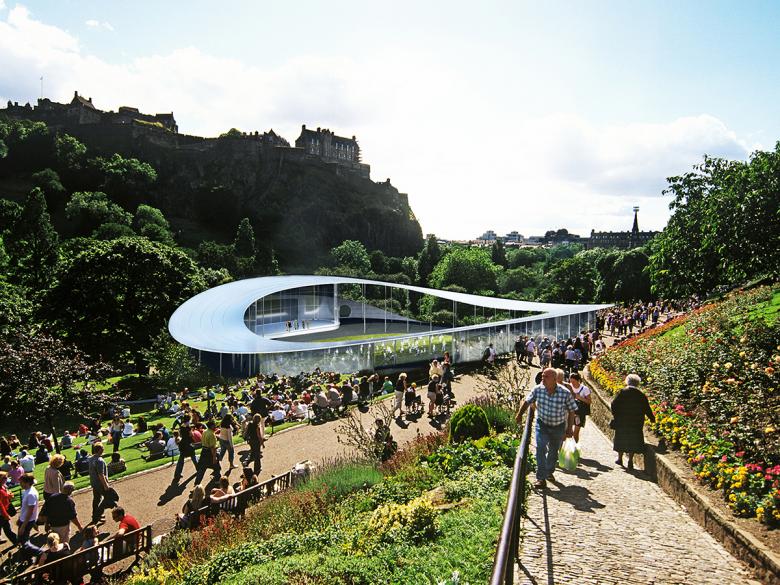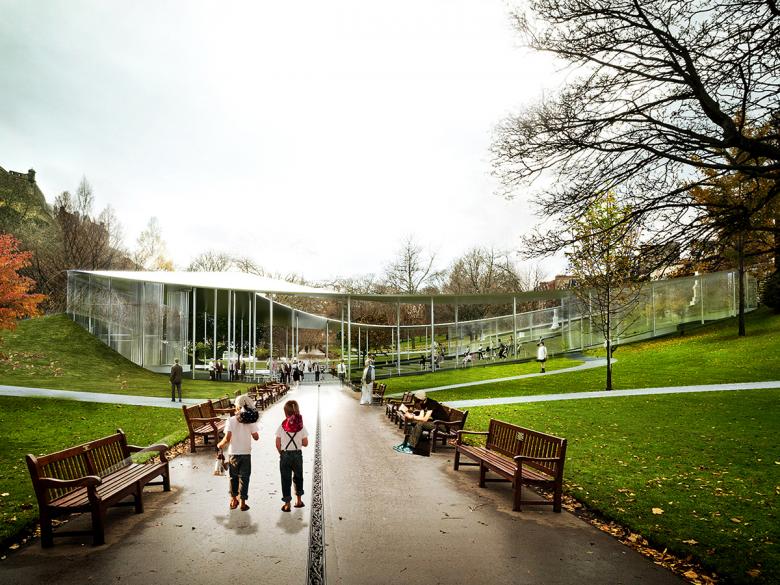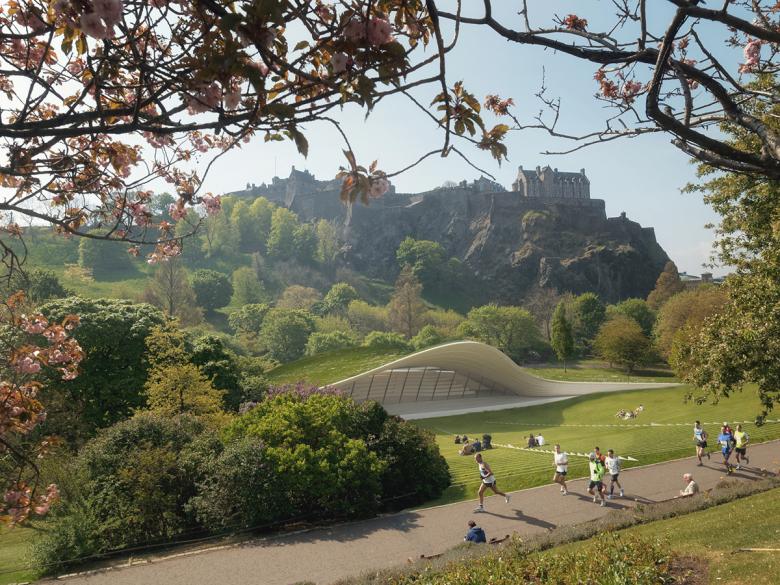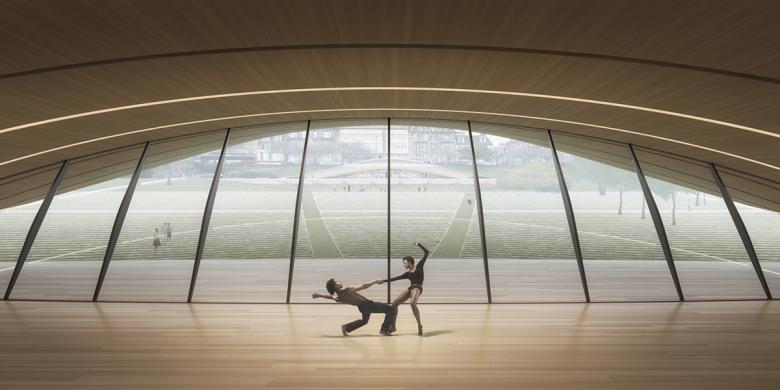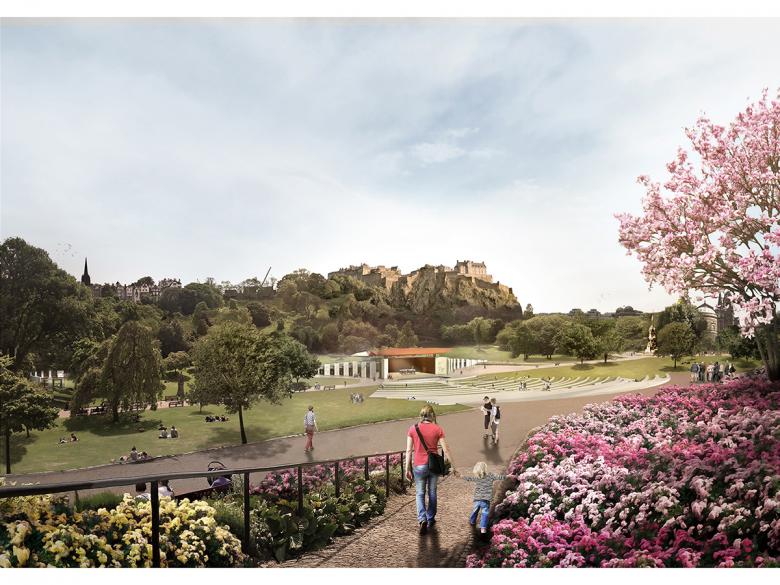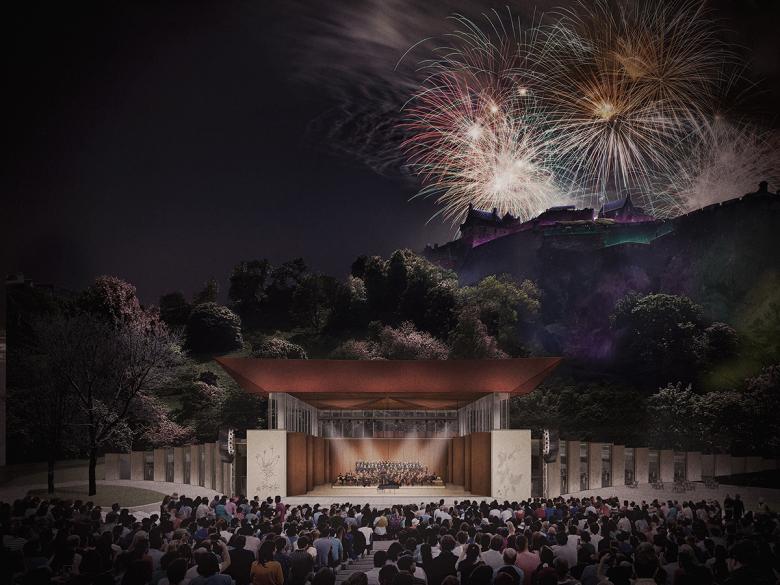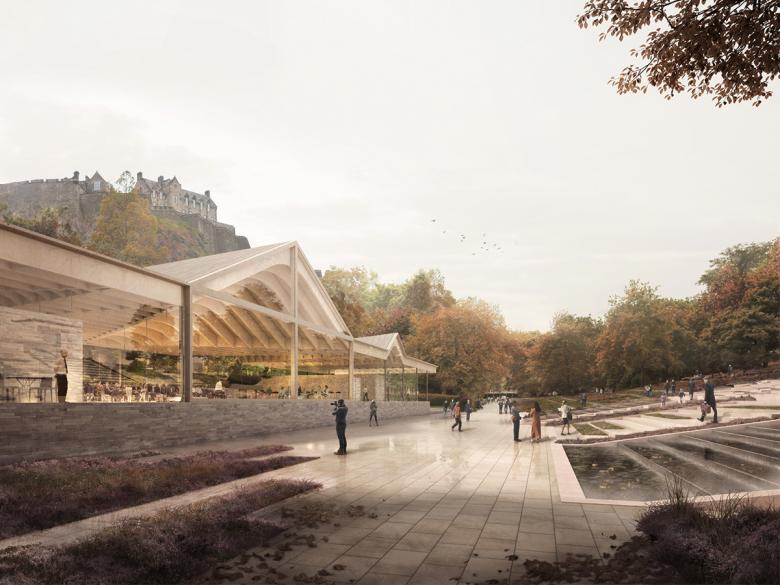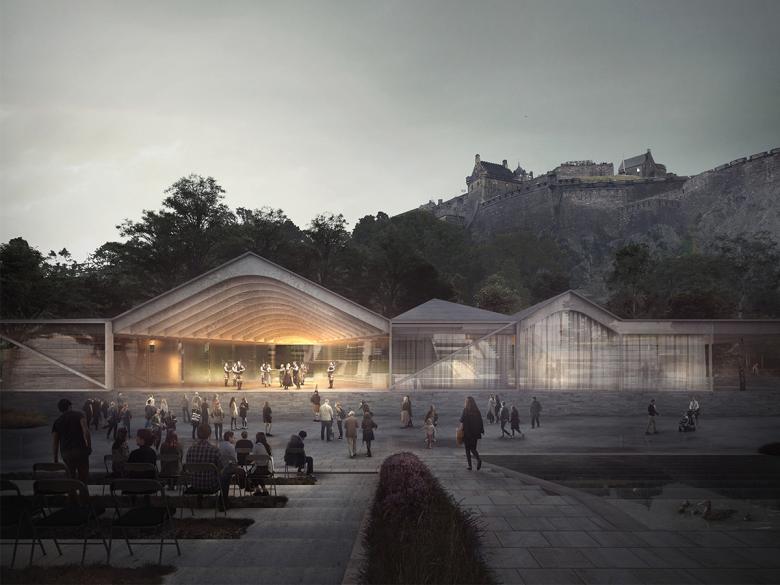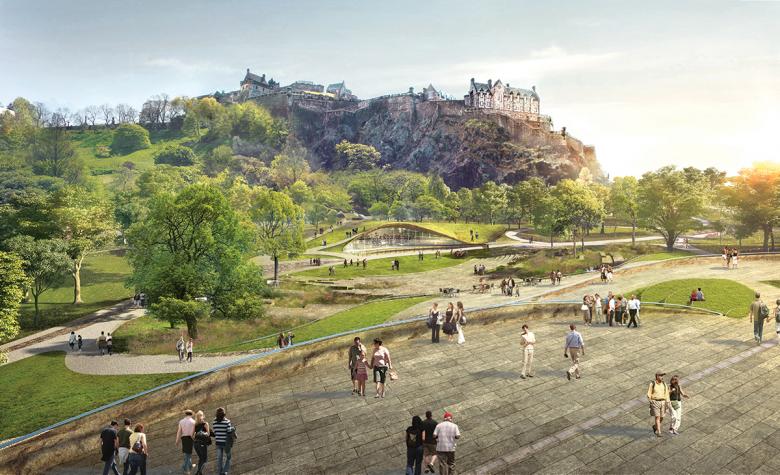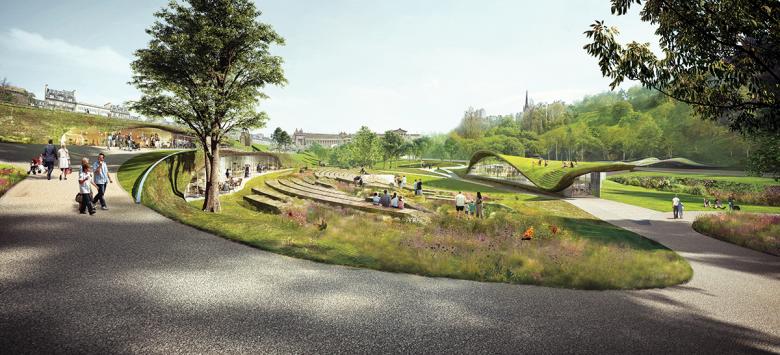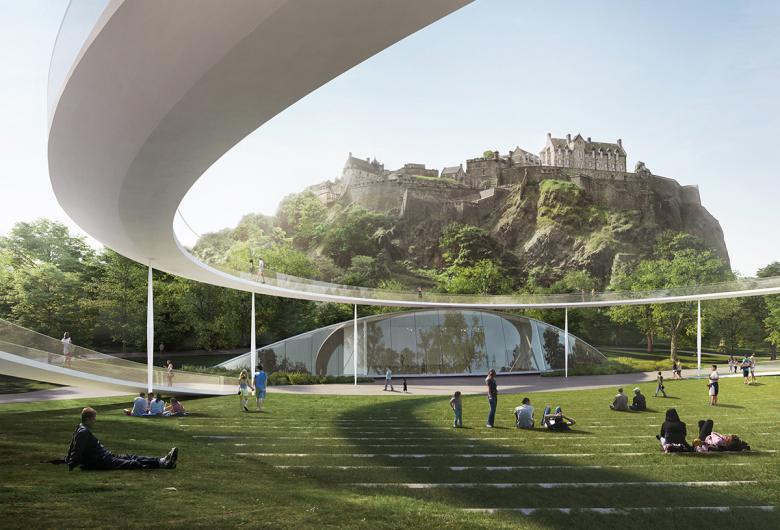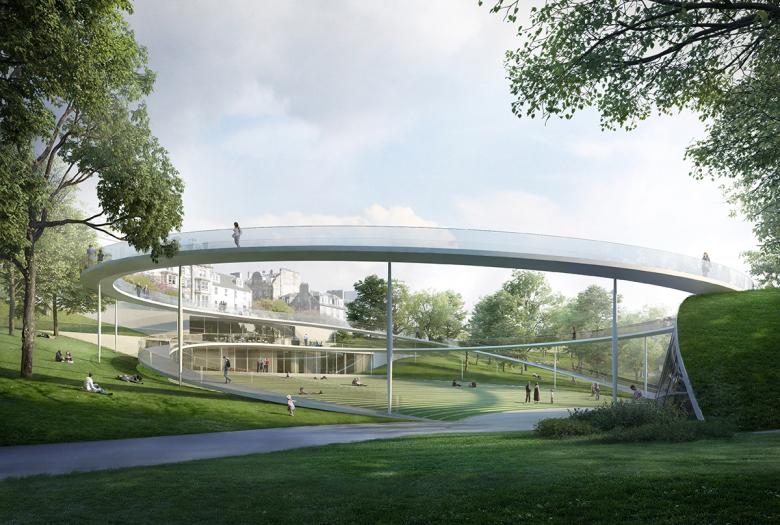7 Concept Designs for Ross Pavilion
John Hill
21. June 2017
Photo © Malcolm Reading Consultants
Seven shortlisted design teams – David Adjaye and BIG, among them – have produced concept designs for the new Ross Pavilion in Edinburgh, Scotland.
The £25m Ross Pavilion and Gardens project is a two-stage competition being overseen by Malcolm Reading Consultants that garnered 125 entrants. The project asks the design teams to focus on "regenerating and renewing an emblematic site at the heart of West Princes Street Gardens, which is presently occupied by the Ross Bandstand." Sited below Edinburgh Casle, the new Ross Pavilion would replace the existing bandstand and create a contemporary venue "for some of Scotland’s most high-profile events and celebrations, notably Hogmanay and the Edinburgh International Festival’s closing fireworks concert."
The seven concept designs are on display in a free exhibition at Edinburgh’s City Art Centre, from 21 June – 30 July 2017. Those visiting can share their views on the project via a survey at the exhibition, though anybody else can do the same by emailing the competition organizers.
The concept designs of the seven shortlisted teams are below, in alphabetical order by the main designer.
Adjaye Associates
Image © Malcolm Reading Consultants / Adjaye Associates
Adjaye Associates with Morgan McDonnell, BuroHappold Engineering, Plan A Consultants, JLL, Turley, Arup, Sandy Brown, Charcoalblue, AOC Archaeology, Studio LR, FMDC, Interserve and Thomas & Adamson
Adjaye Associates’ staid proposal "honors the legacy and architectural language of the original bandstand that was once the beating heart of the Gardens in the late 19th century, reinterpreting its function and iconography within the contemporary context." The firm calls it "a garden temple" and "a pleasure pavilion conceived as a sculptural intervention." Behind the pavilion is a system of stone-clad spaces that are "discreetly embedded into the landscape."
Image © Malcolm Reading Consultants / Adjaye Associates
Bjarke Ingels Group (BIG)
Image © Malcolm Reading Consultants / Bjarke Ingels Group (BIG)
Bjarke Ingels Group (BIG) with JM Architects, WSP Parsons Brinckerhoff, GROSS.MAX., Charcoalblue, Speirs + Major, JLL, Alan Baxter and People Friendly
BIG describes their concept as "sculpted by its context: its gently undulating canopy reflects the movement of the terrain below and the light of the sky above." Formally, the slender canopy on stilts recalls the work of SANAA, though here it is a means of opening up views of the landscape and of the castle above.
Image © Malcolm Reading Consultants / Bjarke Ingels Group (BIG)
Flanagan Lawrence
Image © Malcolm Reading Consultants / Flanagan Lawrence
Flanagan Lawrence with Gillespies, Expedition Engineering, JLL, Arup and Alan Baxter
London's Flanagan Lawrence is proposing a design that undualates with the landscape to "form a topographical and visual division between the Old and New Towns" and creating "a place for people to gather and appreciate the thrilling topography of the city."
Image © Malcolm Reading Consultants / Flanagan Lawrence
Page \ Park Architects
Image © Malcolm Reading Consultants / Page \ Park Architects
Page \ Park Architects, West 8 Landscape Architects and BuroHappold Engineering
with Charcoalblue and Muir Smith Evans
Scotland's Page \ Park proposes leaving the Princess Street Gardens alone and following the "Classical garden tradition [in which] there is a typology of a grotto fed by springs for assembly, marriage, song and dance – the Nymphaeum." Their "grotto" pavilion is "lined in pillars of decorated stone echoing the 'modern henge' Royal Scots memorial and surmounted with a golden copper roof in the spirit of the 'Ross Fountain'."
Image © Malcolm Reading Consultants / Page \ Park Architects
Reiulf Ramstad Arkitekter
Image © Malcolm Reading Consultants / Reiulf Ramstad Arkitekter / Forbes Massie Studio
Reiulf Ramstad Arkitekter with GROSS.MAX., AECOM, Charcoalblue, Groves-Raines Architects and Forbes Massie Studio
Reiulf Ramstad's "simple but bold design" is meant to serve as "a public asset that can not only perform as a modern performance venue, but a visitor experience that explores the varied landscapes and histories of the Gardens and the terrains of Scotland beyond."
Image © Malcolm Reading Consultants / Reiulf Ramstad Arkitekter / Forbes Massie Studio
wHY
Image © Malcolm Reading Consultants / wHY
wHY, GRAS, Groves-Raines Architects, Arup, Studio Yann Kersalé, O Street, Stuco, Creative Concern, Noel Kingsbury, Atelier Ten and Lawrence Barth with Alan Cumming, Aaron Hicklin, Beatrice Colin, Peter Ross, Alison Watson and Adrian Turpin
The sizable team led by California's wHY found inspiration in the word "pavilion," which means "butterfly" in Old French. "Parsed through the pictogram of a highly-decorated tent," their design "evokes the fluttering canvas and heraldry of a field campaign with a glorious connection between nature and humankind."
Image © Malcolm Reading Consultants / wHY
William Matthews Associates and Sou Fujimoto Architects
Image © Malcolm Reading Consultants / William Matthews Associates and Sou Fujimoto Architects
William Matthews Associates and Sou Fujimoto Architects with BuroHappold Engineering, GROSS.MAX., Purcell, Scott Hobbs Planning and Filippo Bolognese
London's William Matthews and Tokyo's Sou Fujimoto propose "a place for people" that was inspired by Celtic spirals, the stone circles of Orkney, and the original bandstand's circular form. Like BIG's circle, "the rings offer new panoramic views of the important heritage sites of the city ... without disturbing the existing axial paths of the Gardens."
